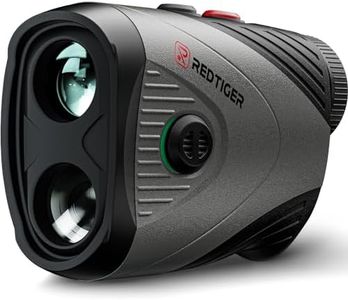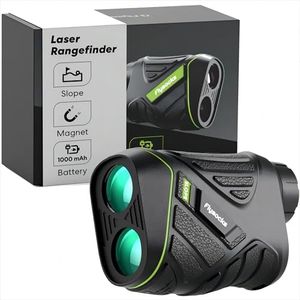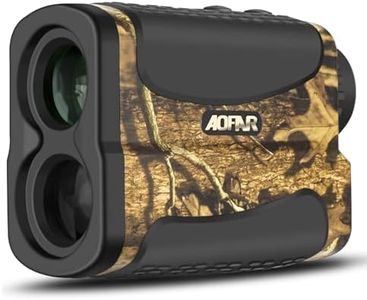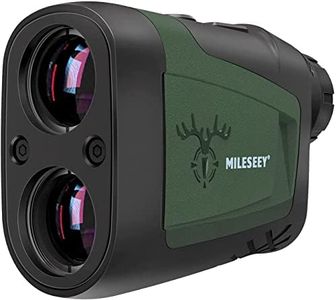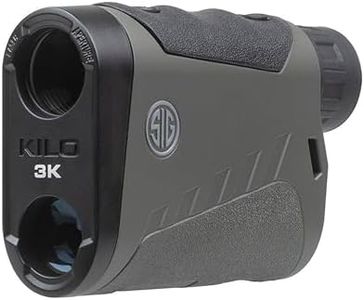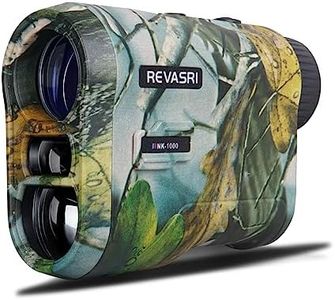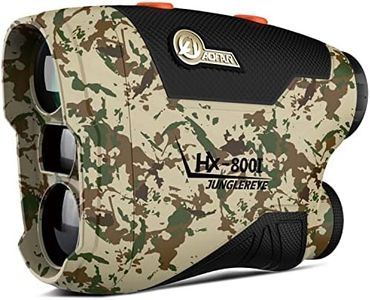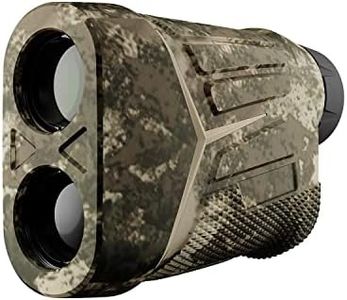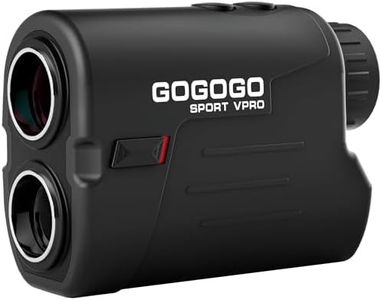We Use CookiesWe use cookies to enhance the security, performance,
functionality and for analytical and promotional activities. By continuing to browse this site you
are agreeing to our privacy policy
10 Best Archery Rangefinders
From leading brands and best sellers available on the web.Buying Guide for the Best Archery Rangefinders
Choosing an archery rangefinder can make a significant impact on your accuracy and overall enjoyment while shooting. A well-chosen rangefinder helps you measure distances to your target quickly and precisely. To make a wise decision, focus on understanding your own shooting style, the environment where you’ll be using it, and the specific features that align with your needs. Don’t get caught up in fancy marketing terms—instead, learn what each key feature truly does, and think about how it'll serve you in the field or at the range.RangeRange refers to the maximum distance at which a rangefinder can accurately measure. This is important because it determines how far out you can spot and calculate the distance to a target. If you mostly shoot within a local archery range or hunt in dense woods, a lower maximum range can work just fine. On the other hand, if you’re into long-range target shooting or hunting across open fields, a higher range might be necessary. Typically, basic models may offer ranges up to 400 yards, mid-range models up to 800 yards, and advanced options may surpass 1000 yards. Match the maximum range of the device to the furthest distance at which you realistically expect to shoot.
AccuracyAccuracy indicates how close the measured distance is to the actual true distance. This is often stated as ‘plus or minus’ a certain number of yards or meters. A difference of a few yards may not be a big deal for casual practice, but for hunting or precision competition, smaller margins (like +/- 1 yard or less) are critical. Assess how precise you need the readings to be—if you shoot at small targets or require exact placement, prioritize a more accurate model.
MagnificationMagnification tells you how much closer the target will appear when viewed through the rangefinder’s lens. Higher magnification can help you clearly spot distant or small targets. Standard range is usually between 4x to 6x. Lower magnification offers a wider field of view, making it easier to spot nearby targets quickly, suitable for woodland or fast-paced scenarios. Higher magnification helps with precise aiming at longer distances but can make it harder to hold steady, especially if you don’t use a tripod. Think about your typical shooting setting—denser forests and close distances work well with low magnification; open fields and long-range shots benefit from higher magnification.
Angle CompensationAngle compensation adjusts the distance reading to account for shooting up or down angles, which commonly happen in hilly terrain or tree stand hunting. Standard rangefinders show only the straight-line distance, but angle-compensating models also show the ‘true’ horizontal distance your arrow will travel. This is crucial if you shoot from elevated positions or experience lots of elevation changes. If you shoot mostly on flat ground, you may not need this feature, but if uneven terrain or elevated stands are your regular spots, angle compensation is a must.
Display TypeDisplay type covers the way information is shown to you through the viewfinder—often as either an LED or LCD display. LED displays usually offer better visibility in low light, which is valuable for dawn or dusk hunts. LCDs may be easier to read in bright sunlight. Some displays are more cluttered, while others are clean and simple. Pick a display that you find readable in the light conditions you’ll encounter most often, and one that presents data clearly and quickly.
Durability and Weather ResistanceDurability and weather resistance refer to how well the rangefinder handles rough use, shocks, and exposure to rain, dust, or snow. Waterproof and fogproof features ensure reliable performance in challenging weather. If you typically handle your gear carefully and shoot in pleasant weather, basic protection might suffice. For field use, harsher environments, or hunting trips, opt for models that specify waterproofing and rugged build quality.
Size and WeightSize and weight can affect comfort and convenience, especially during long outings or when traveling light. Some rangefinders are compact and fit easily in a pocket, while others are larger for extra features and comfort. If portability is key, look for lightweight, compact designs. If steadiness and ergonomics matter more, a larger device may work better. Think about how you carry your gear and whether shaving off weight will improve your experience.
